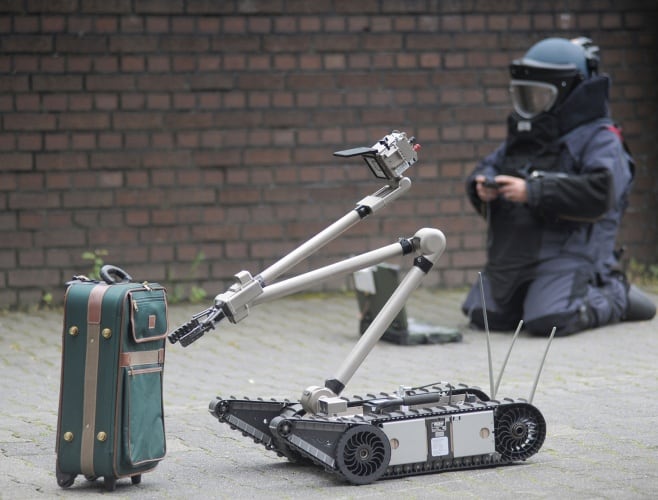
The system uses a variety of tools to record 3D images of the contents and shape of the luggage as well as of the surrounding area. These include a millimetre wave scanner, a high-resolution digital camera, and a 3D environment monitoring system.
The wave scanner can penetrate the package to provide internal images, while the camera and 3D imager allow for enhanced assessment of the external surroundings. All three tools are housed in a module which can be mounted to a robot, enabling bomb disposal engineers to maintain a safe distance. A computer onboard the robot collects the data and sends it to the investigators.
“Up to now our techniques have not allowed us to form a 3D outline of suitcase bombs, and it has been impossible – or only partially possible – to make a spatial map of the contents,” said Stefan A. Lang, team leader at the FHR and the project’s coordinator.
“With the sensor suite we can visualise in three dimensions what’s inside a luggage item, and so determine the composition of the bomb and how the parts are arranged in the luggage.”
Suitcase bombs often have to be destroyed without proper examination of the contents, making it difficult to identify their origins. The team at FRH hopes the research will not only aid bomb disposal teams, but will also help investigators in the aftermath. Key to this is the millimetre wave scanner (also referred to as a radar sensor), which allows a high depth resolution from inside the case.
“For the radar we make use of the synthetic aperture radar, or SAR, principle, by which the sensor is moved along a trajectory, a kind of track – from left to right in front of the case, for example – and the Doppler information generated in the process is used to create an image,” explained Lang.
The team hope to have a demonstrator module ready by April of this year, with field-testing to begin in 2017.




Labour pledge to tackle four key barriers in UK energy transition
I'm all for clarity and would welcome anyone who can enlighten me about what Labour's plans are for the size and scale of this Great British Energy....